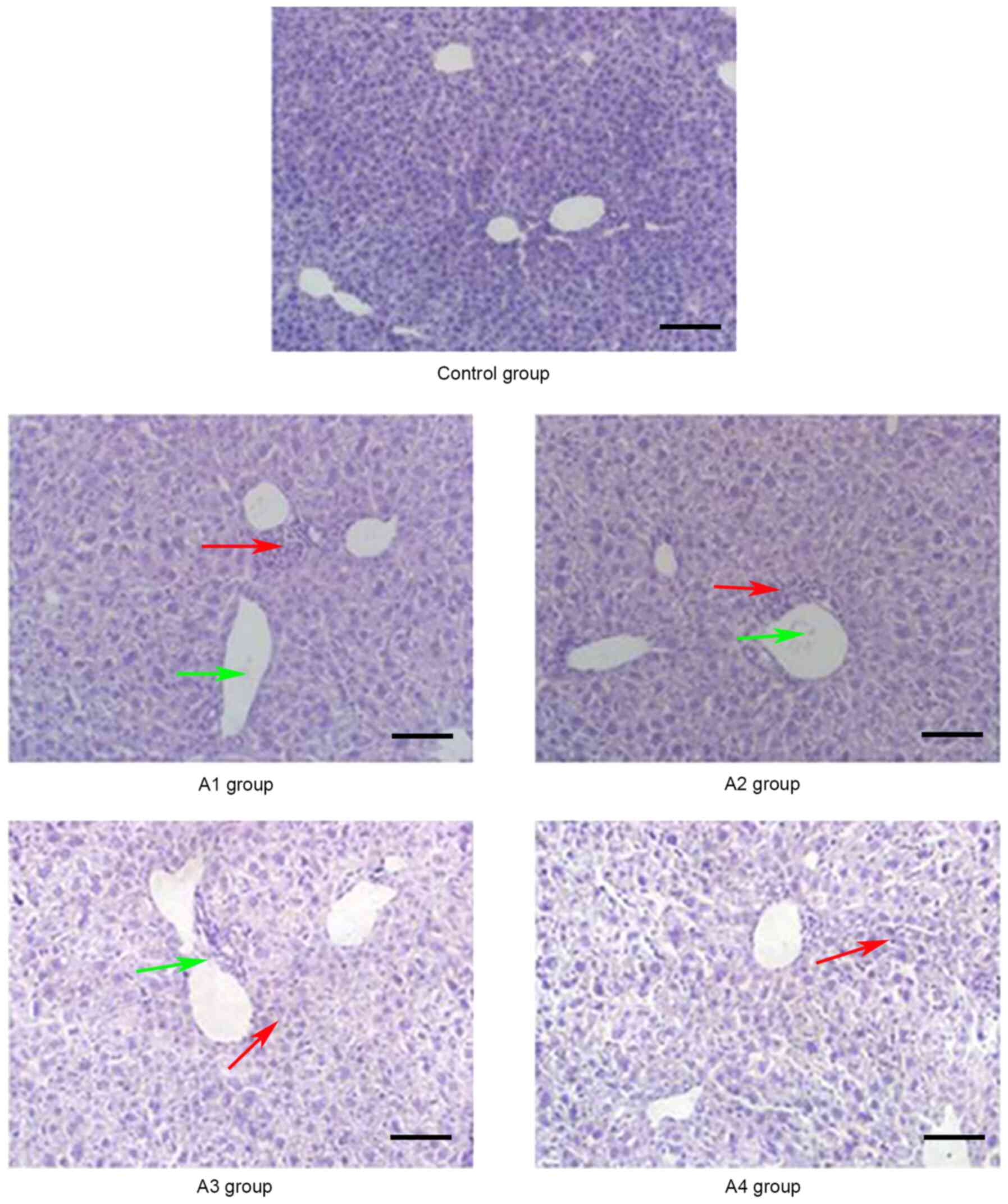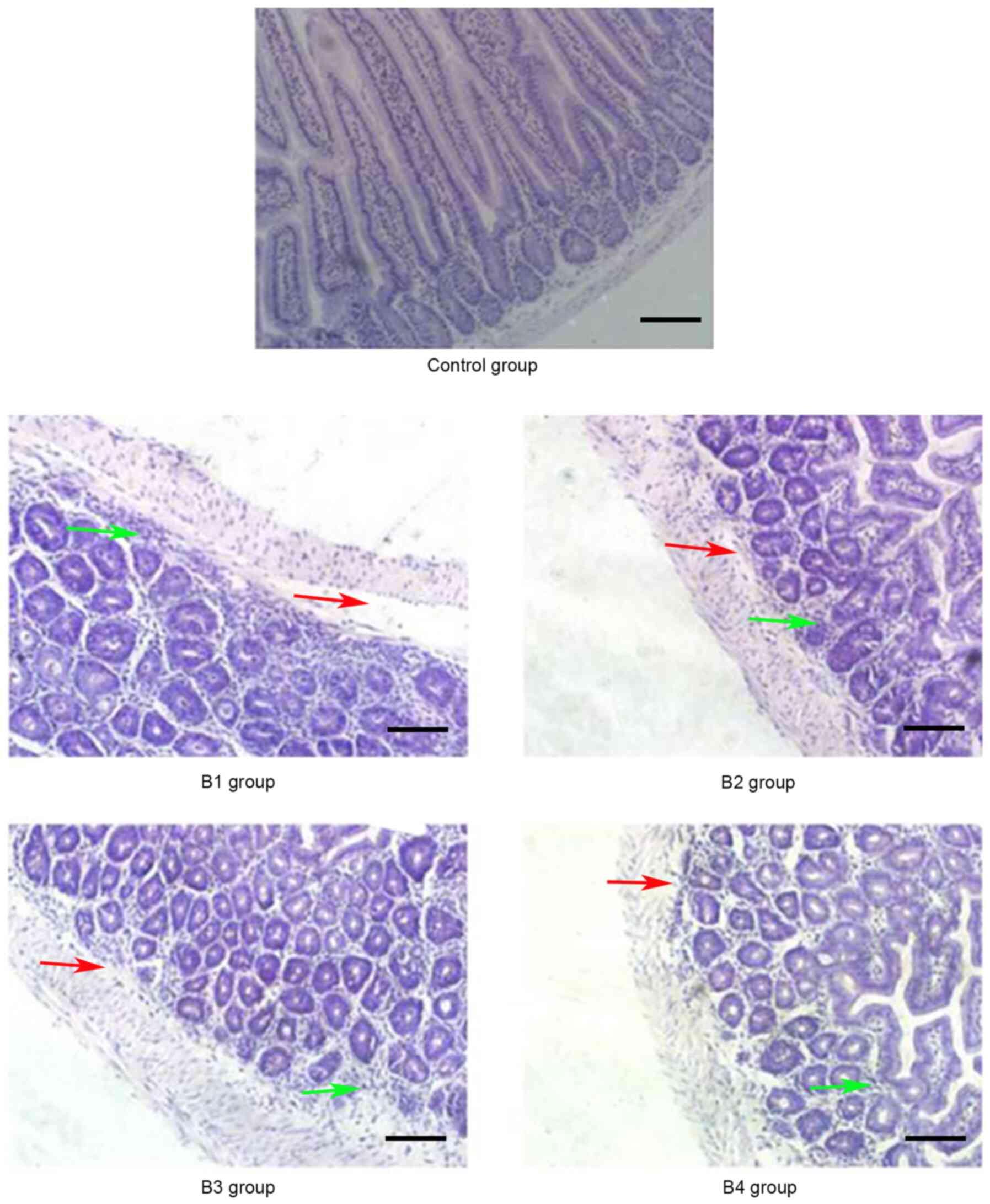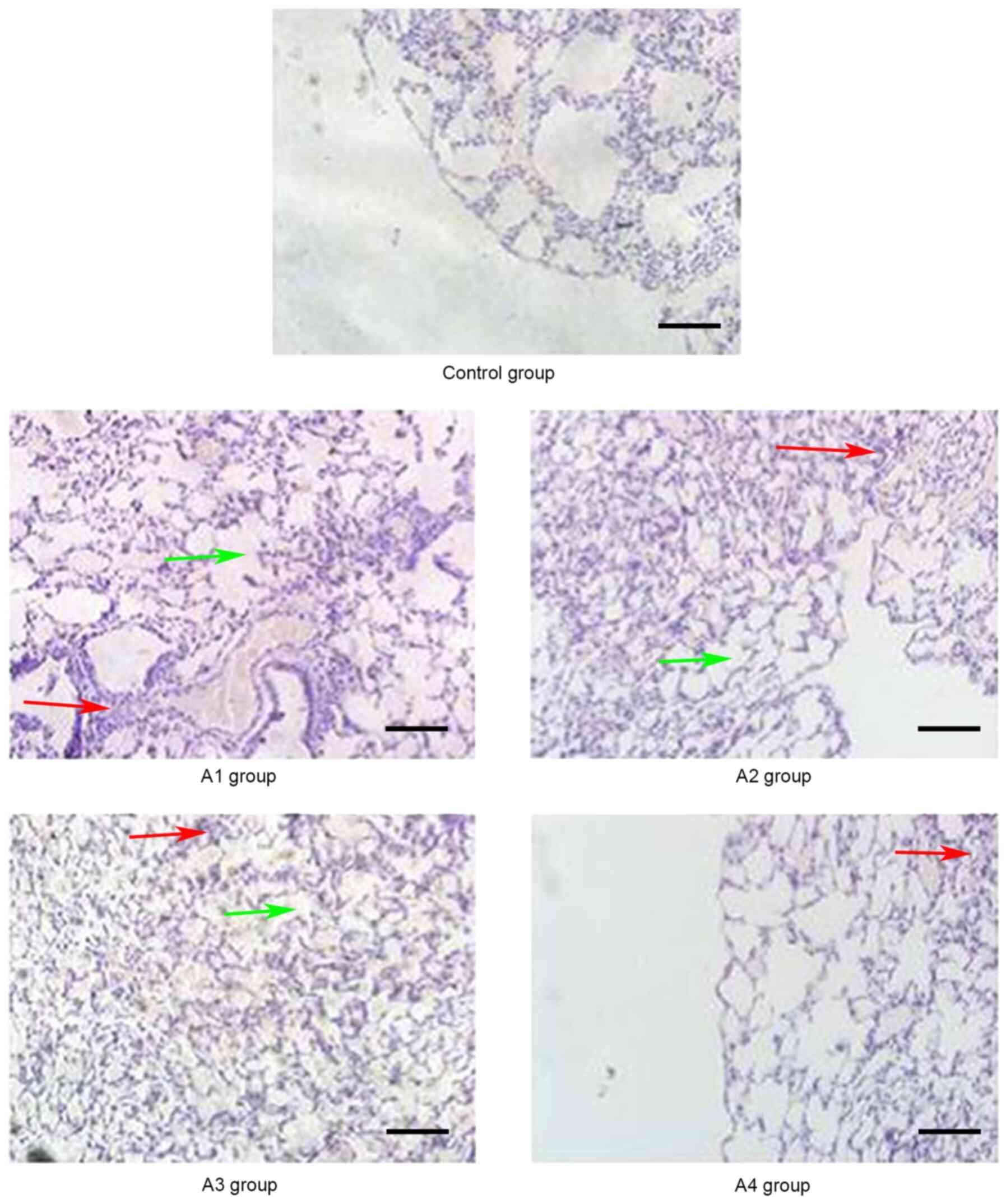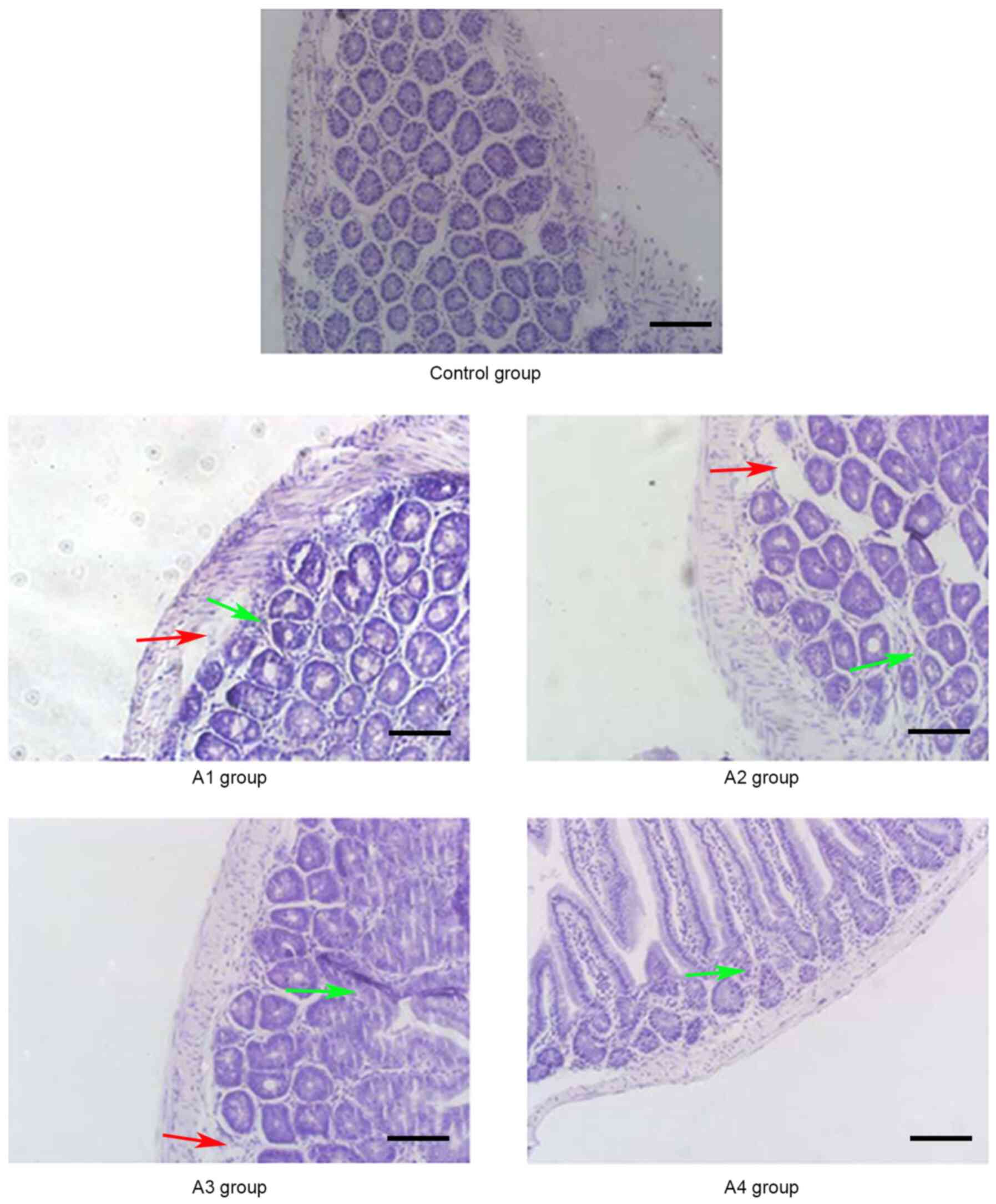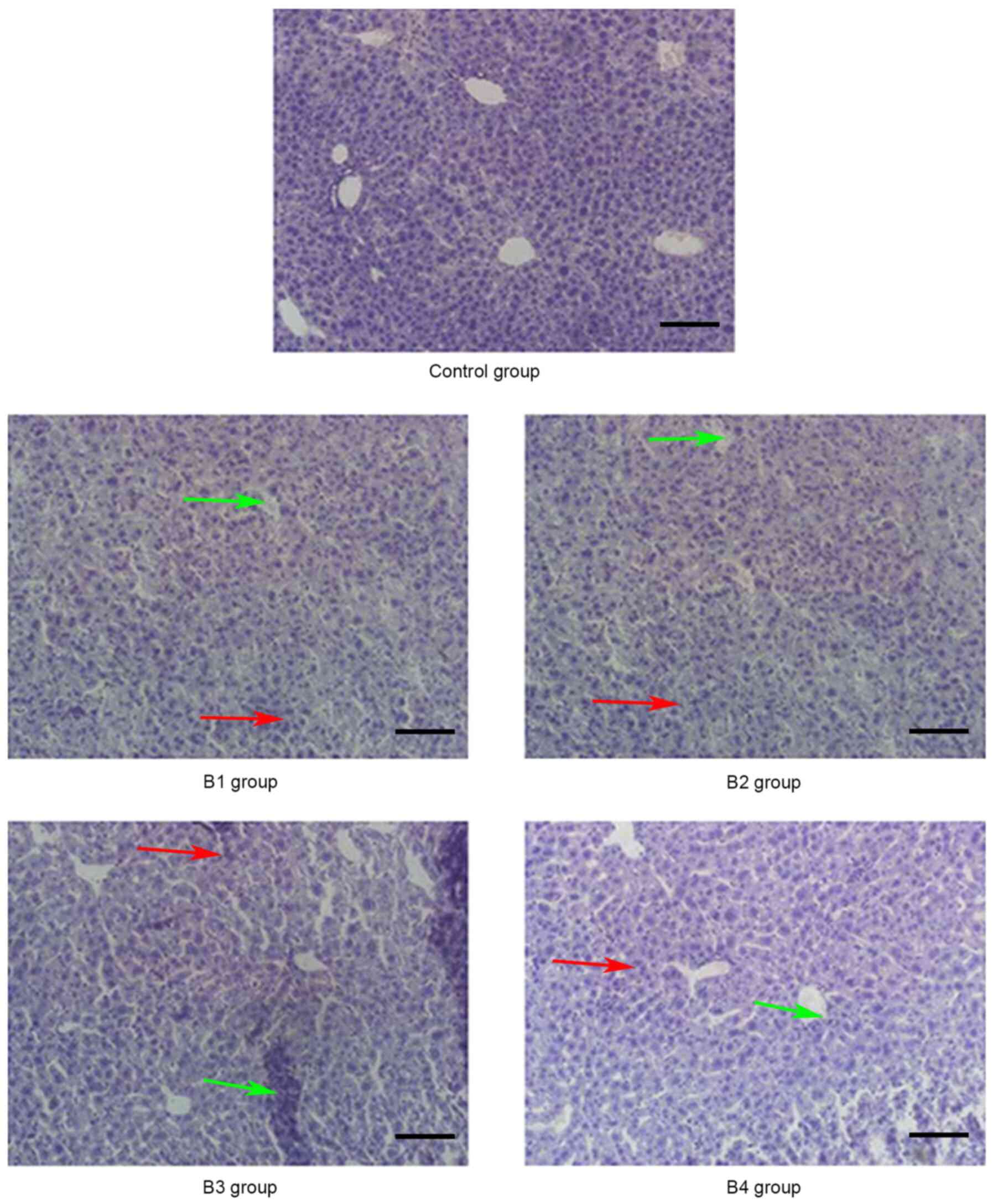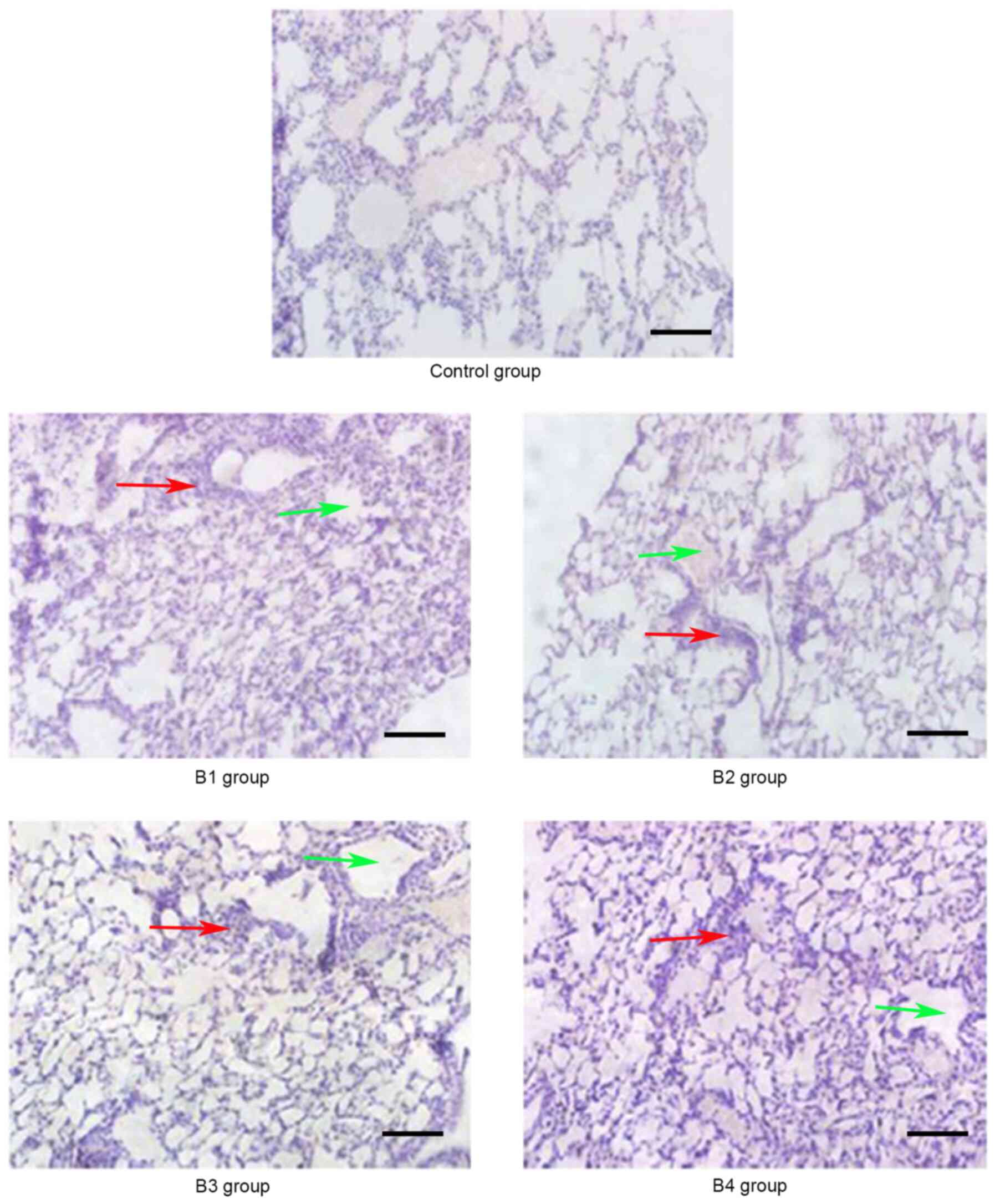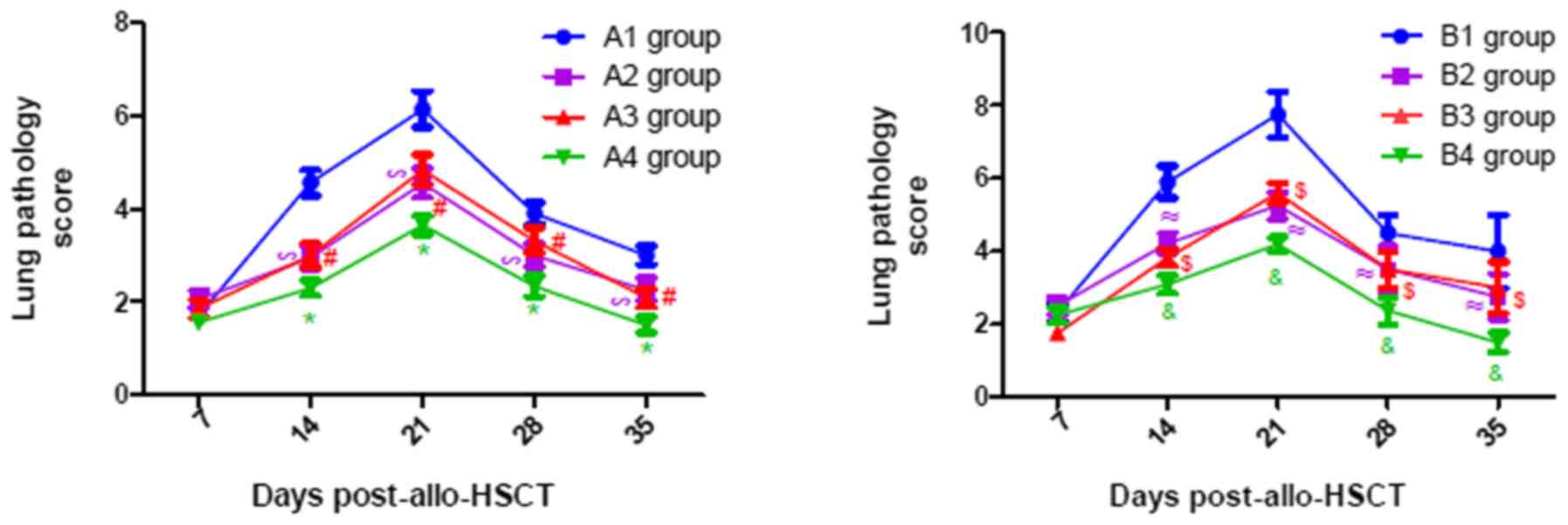|
1
|
Ammer J, Prantl L, Holler B, Holler K,
Landfried D, Wolff S, Karrer R, Andreesen R and Holler E:
Successful treatment of a refractory skin ulcer in chronic
cutaneous GvHD after allogeneic HSCT with split-thickness skin
allografting from the stem cell donor. Bone Marrow Transplant.
47:1368–1369. 2002. View Article : Google Scholar
|
|
2
|
Ferrara JL, Levine JE, Reddy P and Holler
E: Graft-versus-host disease. Lancet. 373:1550–1561. 2009.
View Article : Google Scholar : PubMed/NCBI
|
|
3
|
Lai HY, Chou TY, Tzeng CH and Lee OK:
Cytokine profiles in various graft-versus-host disease target
organs following hematopoietic stem cell transplantation. Cell
Transplant. 21:2033–2045. 2012. View Article : Google Scholar : PubMed/NCBI
|
|
4
|
Tivol EA, Borriello F, Schweitzer AN,
Lynch WP, Bluestone JA and Sharpe AH: Loss of CTLA-4 leads to
massive lymphoproliferation and fatal multiorgan tissue
destruction, revealing a critical negative regulatory role of
CTLA-4. Immunity. 3:541–547. 1995. View Article : Google Scholar : PubMed/NCBI
|
|
5
|
Fevery S, Billiau AD, Sprangers B,
Rutgeerts O, Lenaerts C, Goebels J, Landuyt W, Kasran A, Boon L,
Sagaert X, et al: CTLA-4 blockade in murine bone marrow chimeras
induces a host-derived antileukemic effect without
graft-versus-host disease. Leukemia. 21:1451–1459. 2007. View Article : Google Scholar : PubMed/NCBI
|
|
6
|
Zhu F, Zhong XM, Qiao J, Liu Q, Sun HY,
Chen W, Zhao K, Wu QY, Cao J, Sang W, et al: Cytotoxic T Lymphocyte
Antigen-4 Down-Regulates T Helper 1 cells by increasing expression
of signal transducer and activator of transcription 3 in Acute
Graft-versus-Host Disease. Biol Blood Marrow Transplant.
22:212–219. 2016. View Article : Google Scholar : PubMed/NCBI
|
|
7
|
Kumamoto Y, Tomschegg A, Bennai-Sanfourche
F, Boerner A, Kaser A, Schmidt-Knosalla I, Heinemann T, Schlawinsky
M, Blumberg RS, Volk HD and Utku N: Monoclonal antibody specific
for TIRC7 induces donor-specific anergy and prevents rejection of
cardiac allografts in mice. Am J Transplant. 4:505–514. 2004.
View Article : Google Scholar : PubMed/NCBI
|
|
8
|
Morgun A, Shulzhenko N, Diniz RV, Almeida
DR, Carvalho AC and Gerbase-DeLima M: Cytokine and TIRC7 mRNA
expression during acute rejection in cardiac allograft recipients.
Transplant Proc. 33:1610–1611. 2001. View Article : Google Scholar : PubMed/NCBI
|
|
9
|
Kumamoto Y, Tamura A, Volk HD, Reinke P,
Lohler J, Tullius SG and Utku N: TIRC7 is induced in rejected human
kidneys and anti-TIRC7 mAb with FK506 prolongs survival of kidney
allografts in rats. Transpl Immunol. 16:238–244. 2006. View Article : Google Scholar : PubMed/NCBI
|
|
10
|
Utku N, Heinemann T, Tullius SG, Bulwin
GC, Beinke S, Blumberg RS, Beato F, Randall J, Kojima R, Busconi L,
et al: Prevention of acute allograft rejection by antibody
targeting of TIRC7, a novel T cell membrane protein. Immunity.
9:509–518. 1998. View Article : Google Scholar : PubMed/NCBI
|
|
11
|
Utku N, Heinemann T, Winter M, Bulwin GC,
Schlawinsky M, Fraser P, Nieuwenhuis EE, Volk HD and Blumberg RS:
Antibody targeting of TIRC7 results in significant therapeutic
effects on collagen-induced arthritis in mice. Clin Exp Immunol.
144:142–151. 2006. View Article : Google Scholar : PubMed/NCBI
|
|
12
|
Shulzhenko N, Morgun A, Rampim GF, Franco
M, Almeida DR, Diniz RV, Carvalho AC and Gerbase-DeLima M:
Monitoring of intragraft and peripheral blood TIRC7 expression as a
diagnostic tool for acute cardiac rejection in humans. Hum Immunol.
62:342–347. 2001. View Article : Google Scholar : PubMed/NCBI
|
|
13
|
Zhu F, Qiao JL, Wu QY, Cao J, Zeng LY, Li
ZY and Xu KL: Elevated levels of T-cell immune response cDNA 7 in
patients with immune thrombocytopenia. Hematology. 19:477–482.
2014. View Article : Google Scholar : PubMed/NCBI
|
|
14
|
Utku N, Heinemann T and Milford EL: T-cell
immune response cDNA 7 in allograft rejection and inflammation.
Curr Opin Investig Drugs. 8:401–410. 2007.PubMed/NCBI
|
|
15
|
Heinemann T, Bulwin GC, Randall J,
Schnieders B, Schnieders K, Volk HD, Milford E, Gullans SR and Utku
N: Genomic organization of the gene coding for TIRC7, a novel
membrane protein essential for T cell activation. Genomics.
57:398–406. 1999. View Article : Google Scholar : PubMed/NCBI
|
|
16
|
Bulwin GC, Heinemann T, Bugge V, Winter M,
Lohan A, Schlawinsky M, Schulze A, Walter S, Sabat R, Schulein R,
et al: TIRC7 inhibits T cell proliferation by modulation of CTLA-4
expression. J Immunol. 177:6833–6841. 2006. View Article : Google Scholar : PubMed/NCBI
|
|
17
|
Frischer JM, Reindl M, Kunz B, Berger T,
Schmidt S, Milford EL, Knosp E, Lassmann H and Utku N: TIRC7 and
HLA-DR axis contributes to inflammation in multiple sclerosis. Mult
Scler. 20:1171–1181. 2014. View Article : Google Scholar : PubMed/NCBI
|
|
18
|
Zhu F, Qiao J, Chen W, Pan B, Wu QY, Cao
J, Sang W, Yan ZL, Zeng LY, Li ZY and Xu KL: Increased expression
of T cell immune response cDNA 7 in patients with acute
graft-versus-host disease. Ann Hematol. 94:1025–1032. 2015.
View Article : Google Scholar : PubMed/NCBI
|
|
19
|
Utku N, Boerner A, Tomschegg A,
Bennai-Sanfourche F, Bulwi GC, Heinemann T, Loehler J, Blumberg RS
and Volk HD: TIRC7 deficiency causes in vitro and in vivo
augmentation of T and B cell activation and cytokine response. J
Immunol. 173:2342–2352. 2004. View Article : Google Scholar : PubMed/NCBI
|
|
20
|
Li J, Semple K, Suh WK, Liu C, Chen F,
Blazar BR and Yu XZ: Roles of CD28, CTLA4, and inducible
costimulator in acute graft-versus-host disease in mice. Biol Blood
Marrow Transplant. 17:962–969. 2011. View Article : Google Scholar : PubMed/NCBI
|
|
21
|
Chen W, Li M, Li Z, Yan Z, Cheng H, Pan B,
Cao J, Chen C, Zeng L and Xu K: CXCR4-transduced mesenchymal stem
cells protect mice against graft-versus-host disease. Immunol Lett.
143:161–169. 2012. View Article : Google Scholar : PubMed/NCBI
|
|
22
|
Zhao K, Zhao D, Huang D, Song X, Chen C,
Pan B, Wu Q, Cao J, Yao Y, Zeng L and Xu K: The identification and
characteristics of IL-22-producing T cells in acute
graft-versus-host disease following allogeneic bone marrow
transplantation. Immunobiology. 218:1505–1513. 2013. View Article : Google Scholar : PubMed/NCBI
|
|
23
|
Zhu S, Shi P, Lv C, Li H, Pan B, Chen W,
Zhao K, Yan Z, Chen C, Loake GJ, et al: Loss of NLRP3 function
alleviates murine hepatic graft-versus-host disease. Biol Blood
Marrow Transplant. 24:2409–2417. 2018. View Article : Google Scholar : PubMed/NCBI
|
|
24
|
Blazar BR, Taylor PA, McElmurry R, Tian L,
Panoskaltsis-Mortari A, Lam S, Lees C, Waldschmidt T and Vallera
DA: Engraftment of severe combined immune deficient mice receiving
allogeneic bone marrow via In utero or postnatal transfer. Blood.
92:3949–3959. 1998. View Article : Google Scholar : PubMed/NCBI
|
|
25
|
Kaplan DH, Anderson BE, McNiff JM, Jain D,
Shlomchik MJ and Shlomchik WD: Target antigens determine
graft-versus-host disease phenotype. J Immunol. 173:5467–5475.
2004. View Article : Google Scholar : PubMed/NCBI
|
|
26
|
Qian L, Wu Z and Shen J: Advances in the
treatment of acute graft-versus-host disease. J Cell Mol Med.
17:966–975. 2013. View Article : Google Scholar : PubMed/NCBI
|
|
27
|
Alegre ML, Frauwirth KA and Thompson CB:
T-cell regulation by CD28 and CTLA-4. Nat Rev Immunol. 1:220–228.
2001. View
Article : Google Scholar : PubMed/NCBI
|
|
28
|
Zheng J, Liu Y, Liu Y, Liu M, Xiang Z, Lam
KT, Lewis DB, Lau YL and Tu W: Human CD8+ regulatory T
cells inhibit GVHD and preserve general immunity in humanized mice.
Sci Transl Med. 5:168ra92013. View Article : Google Scholar : PubMed/NCBI
|
|
29
|
Yoo JS, Lee YJ, Yoon JW, Hyunget KE and
Hwang KW: CTLA-4-Tg/CD-28-KO mice exhibit reduced t cell
proliferation in vivo compared to CD-28-KO mice in a
graft-versus-host disease model. Korean J Physiol Pharmacol.
16:349–353. 2012. View Article : Google Scholar : PubMed/NCBI
|
|
30
|
Zhu F, Qiao J, Zhong XM, Wu QY, Chen W,
Yao Y, Niu MS, Fu CL, Zeng LY, Li ZY and Xu KL: Antithymocyte
globulin combined with cyclosporine A down-regulates T helper 1
cells by modulating T cell immune response cDNA 7 in aplastic
anemia. Med Oncol. 32:1972015. View Article : Google Scholar : PubMed/NCBI
|
|
31
|
Tamura A, Milford EL and Utku N: TIRC7
pathway as a target for preventing allograft rejection. Drug News
Perspect. 18:103–108. 2005. View Article : Google Scholar : PubMed/NCBI
|
|
32
|
Hwang KW, Sweatt WB, Brown IE, Blank C,
Gajewski TF, Bluestone JA and Alegre ML: Cutting edge: Targeted
ligation of CTLA-4 in vivo by membrane-bound anti-CTLA-4 antibody
prevents rejection of allogeneic cells. J Immunol. 169:633–637.
2002. View Article : Google Scholar : PubMed/NCBI
|
|
33
|
Krummel MF, Sullivan TJ and Allison JP:
Superantigen responses and co-stimulation: CD28 and CTLA-4 have
opposing effects on T cell expansion in vitro and in vivo. Int
Immunol. 8:519–523. 1996. View Article : Google Scholar : PubMed/NCBI
|















